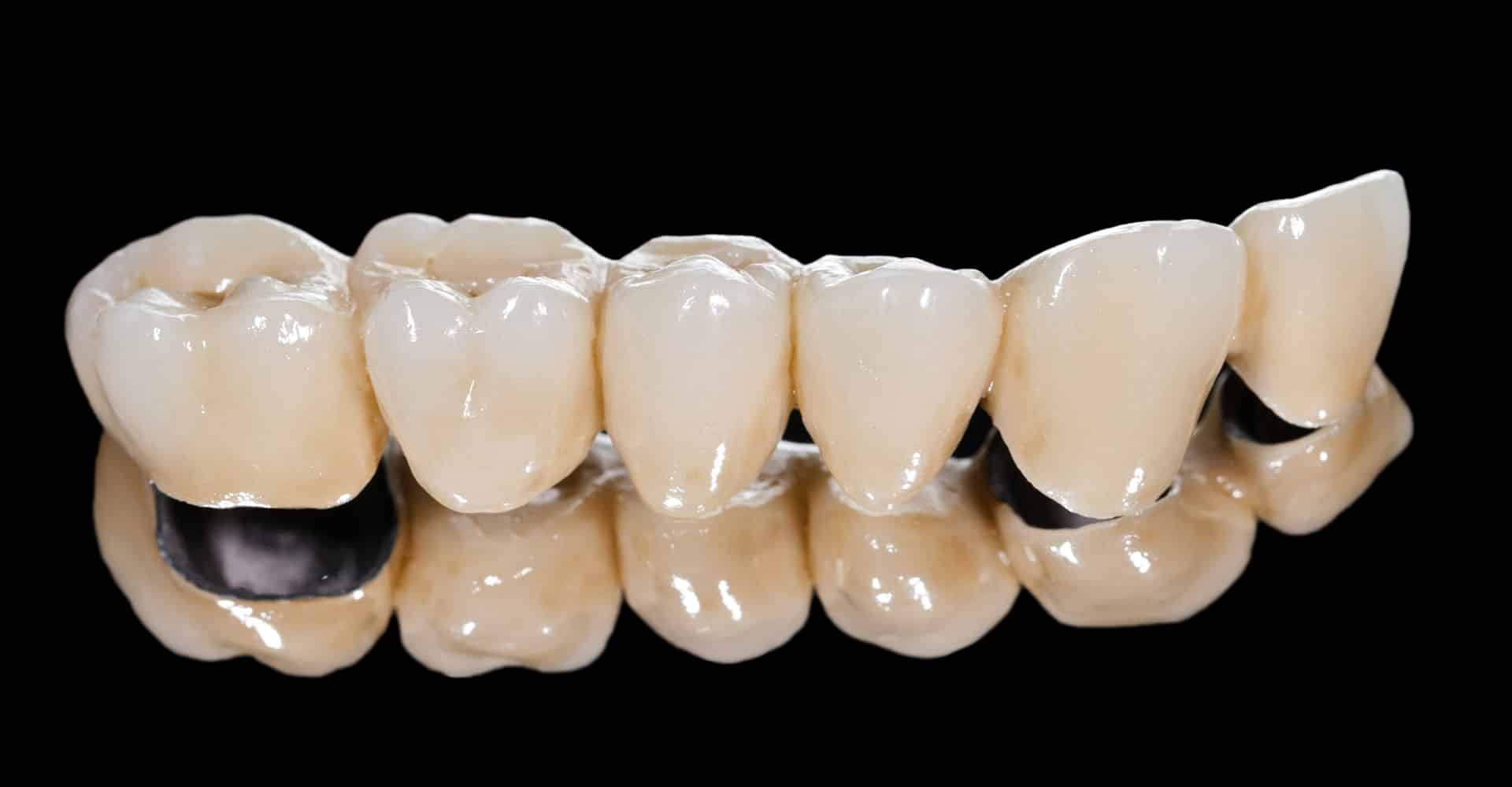
According to the American Dental Association, over 175 million people in the U.S. are missing at least one tooth, and the average adult (aged 20-64) has three or more missing or decaying teeth. Missing teeth can affect how to chew, cause other teeth to shift, and impair speech. Luckily, there are options available to restore missing teeth and improve confidence.
What is a Dental Bridge?
Generally speaking, a dental bridge uses an artificial tooth to fill a gap in the mouth. A relatively easy way to replace a missing tooth or teeth, a dental bridge is anchored to adjacent teeth with crowns on either side of the gap.
Replacement teeth used in a dental bridge are often made from porcelain for both aesthetic and durability considerations but can also be made from gold or alloys.
Most dental bridges are permanently fixed to give them more stability and a life-like feel; however, some patients benefit from a removable bridge (also known as a partial denture). Removable dental bridges are custom-made to match natural teeth and have a gum-colored plastic base.
Dental Bridge Types
There are four types of dental bridges:
- Traditional dental bridges are a common bridge where the teeth on either side of the empty space are prepared for dental crowns, and a false tooth or teeth are placed as to “bridge” the gap between the existing teeth.
- Cantilever bridges are needed when there are adjacent teeth only on one side of the missing tooth or teeth or when the space from the missing tooth is small.
- Maryland bonded bridges use metal or porcelain ‘wings’ on either side of the bridge and is bonded to existing teeth. This dental bridge option is often used to replace missing front teeth.
- Implant supported bridges are needed when there are no adjacent teeth on either side to serve as an anchor for the dental bridge. Implants help simulate roots of the teeth to maintain the integrity of the jawbone and provide further support.
Dental Bridge Cost
Several factors assist in determining the cost of dental bridges. Considerations include whether additional procedures are required (e.g. fillings) to any of the adjacent teeth, what materials are used in creating the dental bridge, preparation in the procedure, and dental insurance coverage.
In general, patients can expect to pay from $600 to $1500 per tooth for a dental bridge. With proper care, patients can expect a dental bridge to last for up to ten years.
Is a Dental Bridge for You?
 Almost anyone missing one to three consecutive teeth is a good candidate for a dental bridge. As an affordable, low-risk treatment for missing teeth, a dental bridge is certainly worth considering to improve dental functionality and oral health.
Almost anyone missing one to three consecutive teeth is a good candidate for a dental bridge. As an affordable, low-risk treatment for missing teeth, a dental bridge is certainly worth considering to improve dental functionality and oral health.
There are many benefits of a dental bridge: a restored smile and improved face shape, the ability to properly chew and clearly speak, correct distribution of force when you chew, and to stop other teeth from shifting out of position to fill gaps from missing teeth.
Areas of slight risk that should be discussed with the dentist include if a dental bridge will weaken surrounding teeth, whether jawbone degeneration is an issue, and any recovery time needed or post-procedure sensitivity that may be experienced. Another important consideration, to ensure the stability and longevity of the dental bridge, is proper care and wellness to ensure overall health.
Are you interested in learning more about dental bridge options? Please contact us to set up an appointment!
